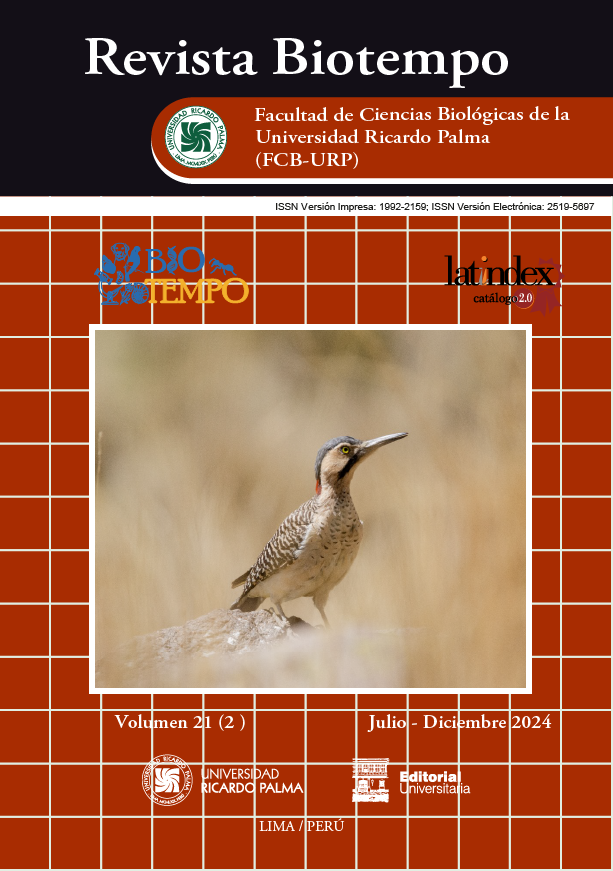Taxonomic diversity of orchid bees (apidae: Euglossini) and its relationship with environmental factors in periurban areas of Yopal, Casanare, Colombia
DOI:
https://doi.org/10.31381/biotempo.v21i2.6772Keywords:
artificial attractant, diversity analysis, análisis, Euglossini, orchid bees transectAbstract
Orchid bees (Apidae: Euglossini) are endemic to the Neotropics, with 134 species recorded in Colombia. These bees are distinguished by being attracted to fragrances from various botanical families and play an important role in natural ecosystems. Research has primarily focused on these natural areas, which is why this study aims to evaluate the taxonomic diversity of orchid bees and their relationship to certain environmental factors in two peri-urban areas (Parque de la Iguana and Mirador de la Virgen) in the city of Yopal, Casanare Department, Colombia. Two types of sampling were conducted: transects (bottle method) and Zigzag, using eucalyptus, vanilla, eugenol, and methyl salicylate fragrances as attractants. The collected specimens were transported for taxonomic identification and preservation in the entomological collection. A total of 280 individuals (4 genera and 11 species) were collected. Diversity was estimated using Hill numbers, with Mirador de la Virgen being 0.66 times more diverse than Parque La Iguana. The species Eufriesea cf concava (Friese, 1899); Eufriesea sp1; Euglossa sp4 and Exaerete smaradigma (Guérin-Méneville, 1844) were only collected in Mirador de la Virgen. However, in terms of site and sampling method abundance, no significant differences were found according to the Kruskal-Wallis test (p-value 0.46 and 0.26). In contrast, there was a significant effect of the bait type (p-value 0.01), with a large effect size (eta2H 0.17) observed between eucalyptus and eugenol differences. Euglossa sp4 showed a preference for all four types of baits, while the genus Eufriesea was exclusively attracted to eucalyptus. NMDS analysis found no relationship between abundance and environmental variables.










